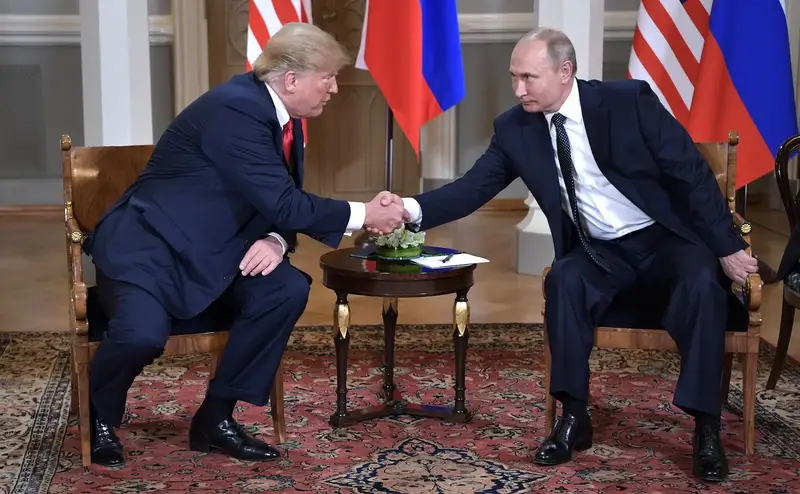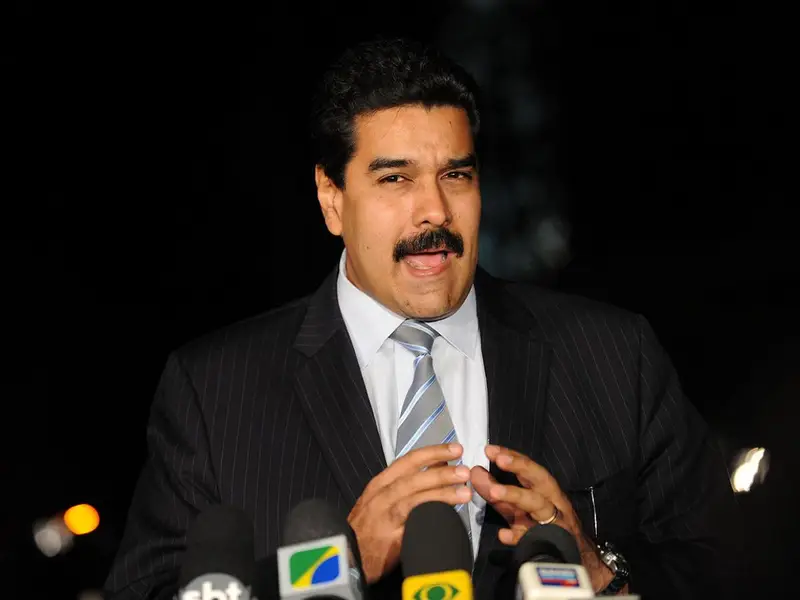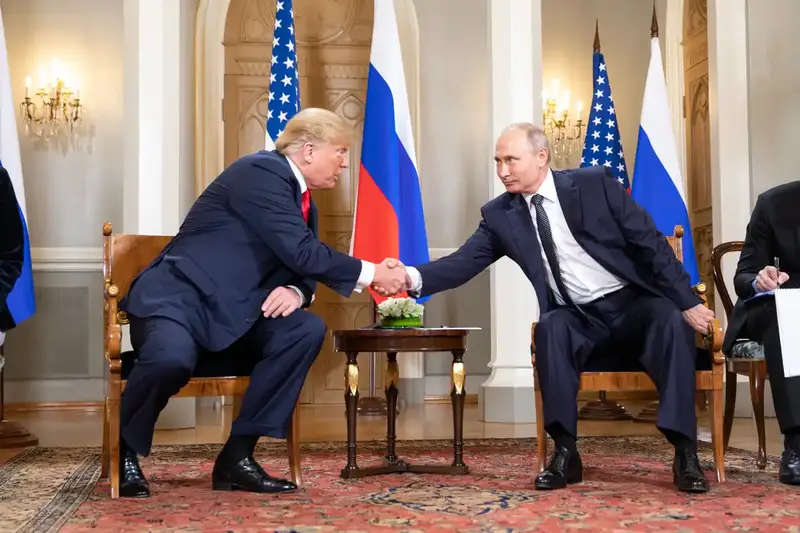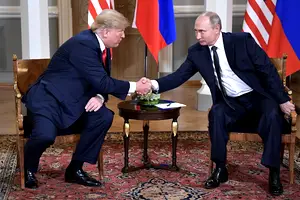Trump's «tariff storm» is turning into an open confrontation with China - and Beijing is ready to defend global free trade

After the United States imposed a 34% import tariff on all Chinese goods, Beijing responded with identical measures. In return, Trump raised tariffs to 104%. China retaliated with 84% on all U.S. products. An increasingly combative Trump raised the rates again to 125%. Later, the White House clarified that the rate could be as high as 145%. A game of escalation had begun.
At the same time, the US suspended tariffs on imports from 75 countries for 90 days. In effect, the tariff conflict has turned into a trade war between the United States and China. Of the U.S.’s major trading partners, only the EU has responded, and it has done so cautiously. After Washington softened its stance, Brussels imposed a mirror moratorium on retaliatory tariffs for 90 days.
Beijing, on the other hand, declared its determination to defend not only its own interests but also the global trading system based on WTO rules. After a brief pause, China announced on Saturday that it would raise tariffs on U.S. imports to 125 percent. Beijing also filed a formal complaint with the WTO.
«There are no winners in tariff and trade wars. If the American side chooses to ignore the interests of both countries and the global community and insists on starting a tariff and trade war, China will undoubtedly fight to the end», said Chinese Foreign Ministry spokesman Lin Jian. He added that Beijing «will not sit idly by while the Chinese people are deprived of their legitimate rights and interests».
The Chinese Foreign Ministry accused the U.S. of «serving its hegemonic interests» and expressed confidence that the policy would be opposed by the international community. Echoing this tone, Ministry of Commerce spokesman He Yongqian said that China does not oppose negotiations — if they are conducted on equal terms — but is «ready to fight to the end» if necessary. «This is a typical example of unilateral intimidation that threatens the stability of the global economic and trade order. China resolutely opposes it», he said.
Meanwhile, Foreign Ministry official Mao Ning posted a historical video on Chinese social media showing Mao Zedong during the Korean War declaring to the Americans: «No matter how long this war lasts, we will never surrender. We are Chinese. We will not retreat».
Previously, China had imposed export restrictions on seven rare earth elements — samarium, gadolinium, terbium, dysprosium, lutetium, scandium, and yttrium — all critical to high-tech manufacturing. It also imposed sanctions on 18 American companies.
According to the US media, Beijing’s actions caused some confusion in Trump’s circle. A response was expected — but not as harsh. And this could be just the beginning of China’s retaliation in the unfolding trade war.
Notably, on April 9, a high-level meeting was held in Beijing focusing on cooperation with neighboring countries — including Russia — which, as stated, is «a priority in the current diplomatic environment and a critical element in building a shared future for mankind».
The decisions made remain unknown. However, according to the Chinese press, President Xi Jinping delivered a speech calling for the development of relations with neighboring countries «on the basis of sincerity, goodwill and mutual benefit», with the aim of building «a community of shared future».
This situation clearly outlines China’s strategic approach: strengthening relations with the rest of the world, especially regional neighbors, in response to American pressure. In Beijing’s view, the world doesn’t revolve around the U.S. China is now rallying opponents of Trump’s policies and supporters of free trade around the world.
In fact, it’s not a new strategy. China has been expanding its global partnerships — not just through the Belt and Road Initiative — for decades. This includes participation in alternative political and economic alliances such as BRICS and the Shanghai Cooperation Organization, as well as sustained engagement with African nations.
It’s worth noting that ASEAN has become China’s largest trading partner. According to China’s National Bureau of Statistics, trade with ASEAN reached $982 billion last year. A significant portion of this is believed to represent Beijing’s efforts to circumvent U.S. sanctions and restrictions.
Russia also plays an important role in this strategy. Bilateral trade has grown dramatically in recent years, reaching $244 billion last year. Central Asian countries are also increasingly integrated into this strategic framework.
China’s second largest trading market is the European Union, with a trade volume of $785 billion. Judging by recent statements from both Brussels and Beijing, pressure from Washington may lead to closer cooperation between China and the EU and the removal of existing barriers to economic engagement. With the EU now pursuing a more independent foreign policy, Beijing may seek to capitalize on these differences and forge a stronger partnership with Europe in contrast to Washington’s current course.
Of course, China’s main trump card remains China itself — not only the world’s largest market, whose potential is far from being fully realized, but also a country with a unique political and economic system and long-established governance practices. Together, these have allowed China to become «great» over the past four decades while maintaining domestic stability.
A major advantage is that China has a far greater capacity than the United States to coordinate internally across economic sectors and with the state, which ultimately sets economic policy and responds to challenges. The combination of market mechanisms and planning tools allows China to look years, even decades, ahead and adapt quickly to new conditions.
A decade ago, China began to move away from export dependence and toward the so-called «dual circulation» strategy of rebalancing the domestic market and stimulating domestic demand. The campaign to eradicate poverty — in which China has achieved more than any other country — also serves to expand domestic consumption. Programs such as «trade-in» have been in place for several years, further boosting consumption and redirecting production from external to internal markets.
China has been preparing for this kind of disruption for a long time. First, because the threat of tariff wars has existed before, and during Trump’s first term, China has already been «training» for it. Second, as GEOFOR has written before, the contradictions between China and the United States are not temporary — they are existential. These are two superpowers, not only with the largest economies, but with fundamentally different political and social systems.
That’s why hopes within the U.S. administration — and among many observers — for a quick capitulation from Beijing are in vain. Chinese officials understand that these contradictions cannot be fundamentally resolved through negotiations when the other side uses the language of force.
Tariffs are not China’s only response. According to American media, Trump’s decision to impose a 90-day tariff moratorium on 75 countries was prompted by Japan’s actions — after the tariff hike, Tokyo began actively selling U.S. Treasury bonds.
At the end of January 2025, China held $761 billion in U.S. Treasuries, making it the second-largest foreign holder after Japan, which holds $1.08 trillion. What happens if China starts dumping U.S. bonds as well?
If the current tariffs remain in place, trade between the U.S. and China could fall by 70–80% in the near future. China is the second largest source of imports for the U.S., while the U.S. is the third largest source of imports for China. The consequences for global markets could be severe as supply chains realign in response to the U.S.-China rift.
China views the U.S. primarily as a supplier of raw materials and is already replacing U.S. imports with goods from other countries. For example, China has almost completely stopped importing American energy products.
As for Chinese exports to the U.S. — valued at more than $524 billion — they cannot be abandoned overnight. Tariffs will be passed on to final product prices. This could lead to a sharp rise in prices, especially for consumer goods, and inflation — with unpredictable consequences for the Trump administration.
It’s important to note that the political standing of Xi Jinping and the Chinese leadership is much stronger than that of the U.S. president.
On Chinese social media, Trump’s hardline approach has sparked a wave of indignation. Many people are expressing a willingness to resist «American imperialism» and accept economic hardship rather than give in to crude pressure.
Whether American society is ready for this remains to be seen. So far, Trump’s plans have produced little in the way of concrete results — though they have generated a lot of noise. Unless something extraordinary happens, such as impeachment, the first congressional midterm elections of his second term will take place in November 2026. By then, Trump will have to show what his policies have achieved — or risk losing ground to the Democrats. He is taking a gamble by continuing his «contain China» strategy — but will it pay off?









